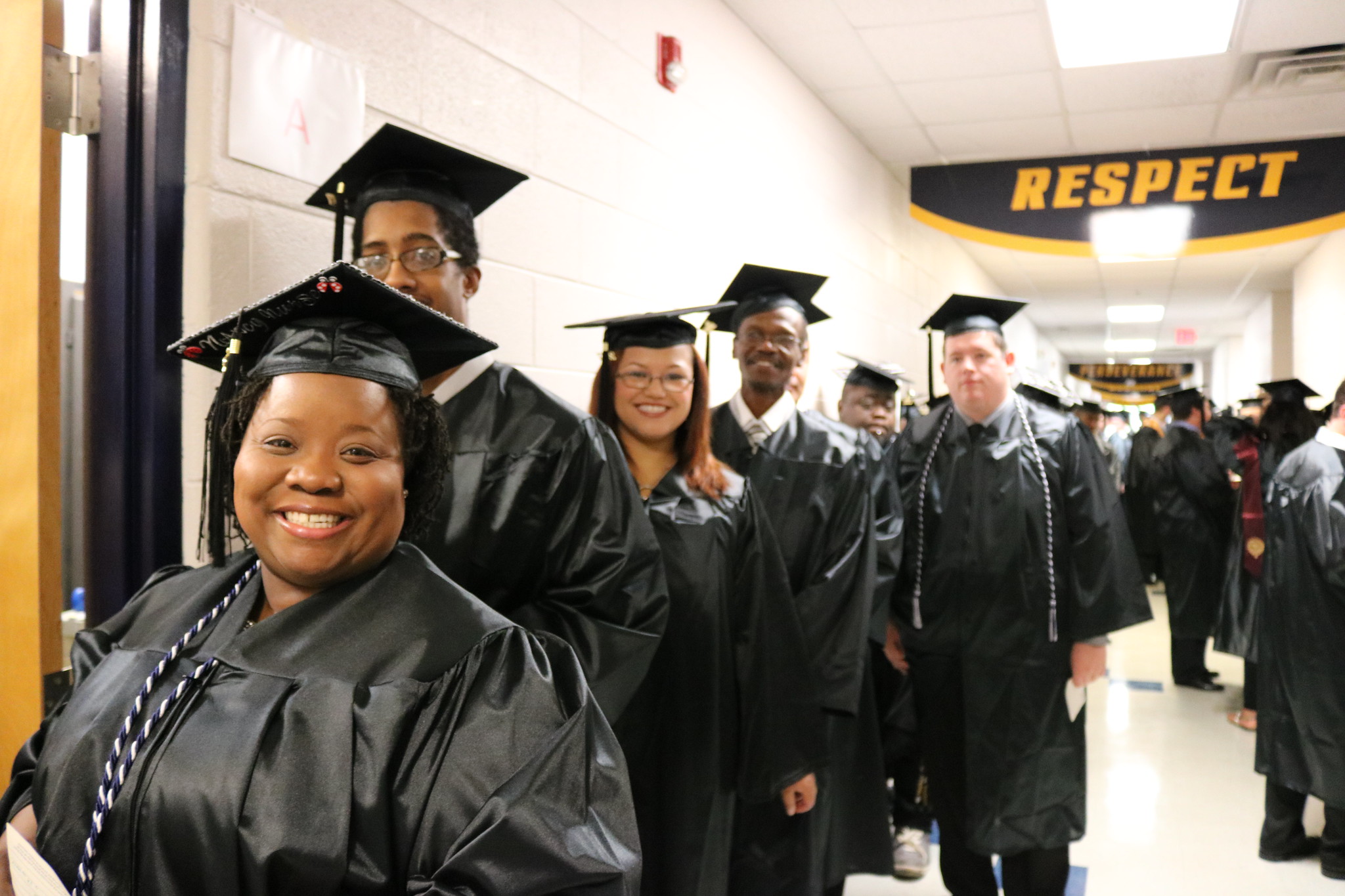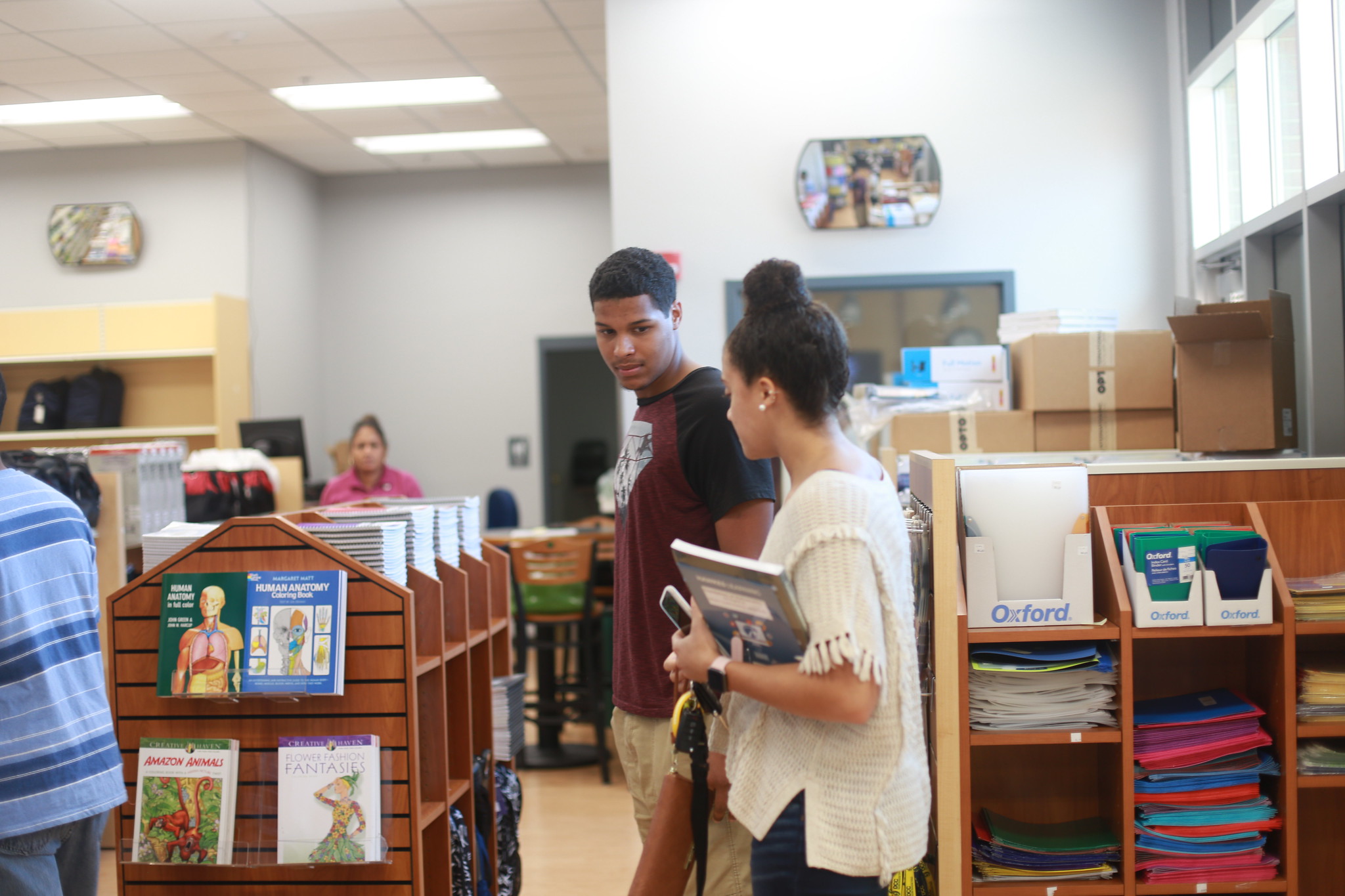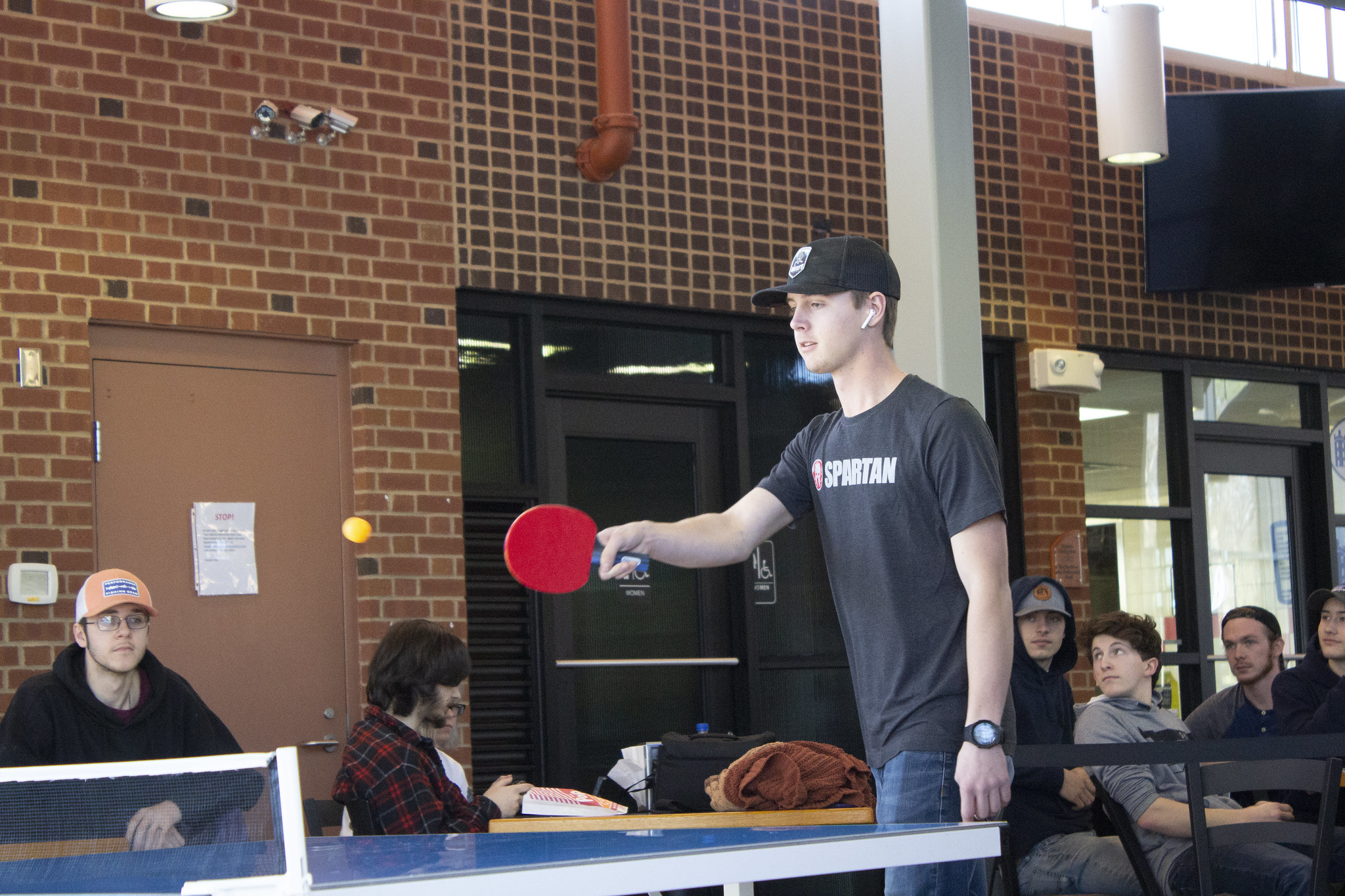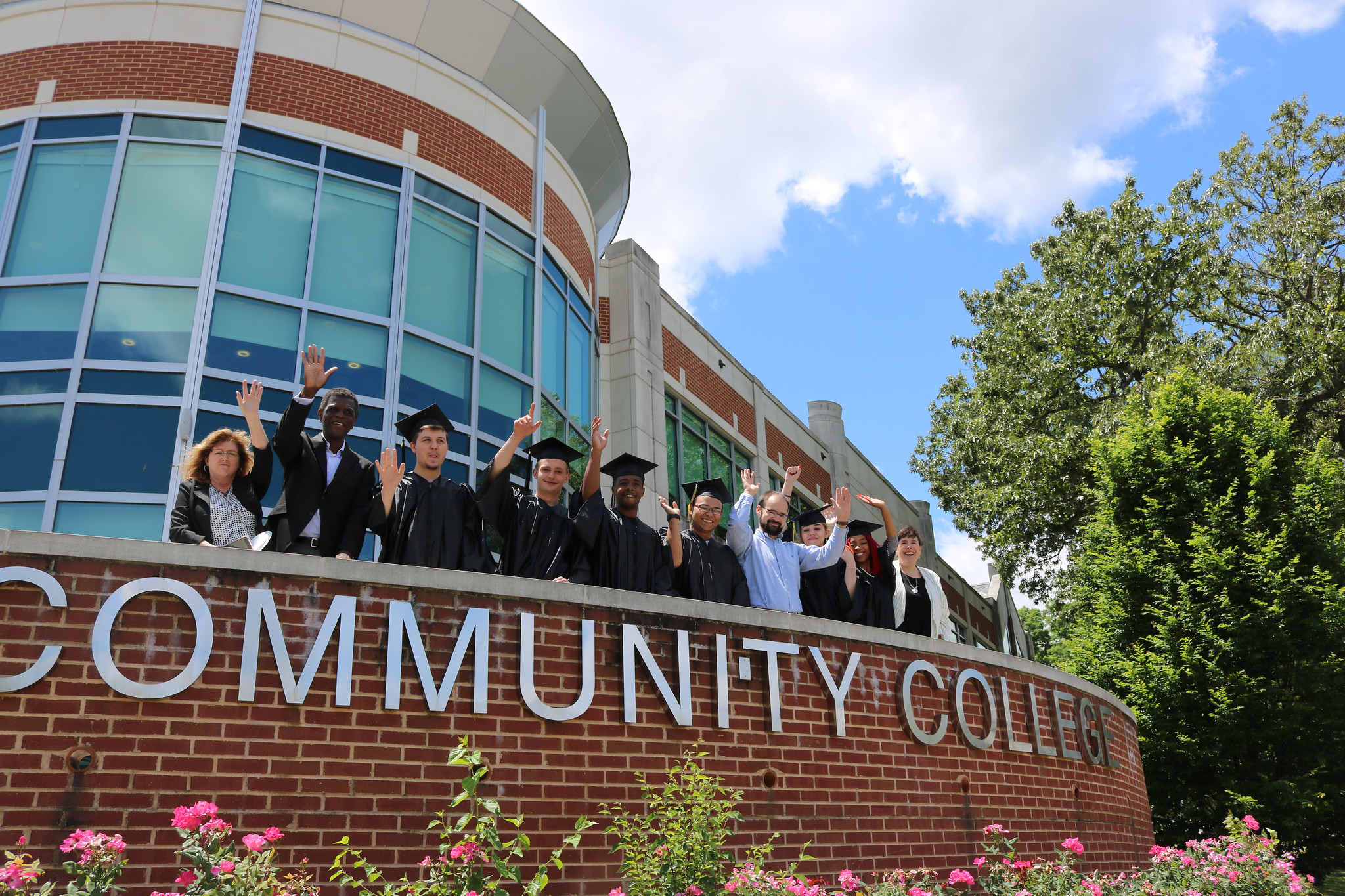Students who are deaf or hard of hearing may compensate and cope with their hearing loss in a variety of ways. Some people read lips, some use sign language and interpreters, some people use hearing aids and other assistive listening devices, and many use a combination of techniques and devices. Hearing loss is measured by decibels, and according to the decibel count the loss may be mild, moderate or profound.
The ADA Counselor will coordinate interpreting services for classes and other accommodations. For additional services, students who are deaf or hard of hearing should contact the Coordinator of Community Services for Persons who are Deaf and Hard of Hearing at (434) 797-8479 or TDD: (434) 797-8542.
Deafness
“Deaf” refers to persons with nonfunctional hearing. In many cases their English skills will be deficient. Some people who are deaf are members of a distinct linguistic and cultural group. Some may live in a community or extended family that includes numerous other individuals who are deaf or hard of hearing. They may use American Sign Language (ASL) or Signed English as their first language. Therefore, members of this cultural group are bilingual and English is their second language. As with any cultural group, people who are deaf have their own values, social norms and traditions. Because of this, faculty should be sensitive and attentive to cross-cultural information in the classroom setting. The following points should be kept in mind when working with students who are deaf:
- Very few people are totally deaf.
- Not all people who are deaf know how to sign. Not all students who are deaf use interpreters. Some prefer to communicate through lip reading and some prefer sign language.
- English skills for a student who is deaf are not related to intelligence but are similar to those experienced by students with English as a second language.
- The terms “deaf and dumb” and “deaf mute” are no longer acceptable, carry a negative connotation, and should not be used.
Hard of Hearing
The term “hearing impaired” refers to any person with any type or degree of hearing loss. “Hard of hearing” is used to define a person whose sense of hearing, although defective, is functional and whose English skills will be developed through an auditory base. Hard of hearing refers to those individuals who may use speech, lip reading and/or hearing aids to enhance oral communication. For those who use lip reading, only 30 to 40 percent of spoken English is comprehensible even for those who are highly skilled. Characteristics of a hearing loss may include a student’s straining to hear, intense concentration on the speakers face, use of loud or distorted speech, request to repeat or spell words, and consistent failure to respond.
COMMUNICATING WITH STUDENTS WHO ARE DEAF OR HARD OF HEARING
- Get the person’s attention before speaking. Shorten the distance between speaker and listener.
- Face the student; keep your face within view whenever you speak; and speak in a natural tone of voice.
- When writing on the board, remember to repeat explanations while facing the class (i.e., don’t write and talk to chalkboard) If an interpreter is present, speak directly to the student and not to the interpreter.
- Use facial expressions, gestures, and body language to convey the message.
- Smoking, chewing gum, and facial hair add to the difficulty of lip reading.
- Keep sentences short. Messages may need to be reworded.
- Address the person by name to initiate communication.
- Lip-reading new vocabulary is extremely difficult. Write the word and let the person see how you pronounce it.
- At the beginning of a classroom presentation and at regular intervals, draw the student’s attention before speaking. Repeat the questions and remarks of other people in the room.
- Ask the student to repeat if you do not understand. Pen and paper may be needed to communicate
Communication is the goal; the method is unimportant. Do not be alarmed if the student does not understand or if you cannot understand the student. You will become accustomed to each other in time.
TEACHING STUDENTS WHO ARE DEAF OR HARD OF HEARING
- Order captioned videos when possible.
- Let the deaf or hard of hearing student determine the best seating arrangement in order to see you and the interpreter.
- Modify the environment to minimize background noise.
- Use the chalkboard to reinforce spoken presentations to the extent practicable.
- Assist the student in identifying a Notetaker and if necessary in the laboratory, a lab partner. The Counseling Office may be able to provide assistance in this area.
- When possible, provide the student with class outlines, lecture notes, lists of new technical terms, and printed transcripts of audio and audio-visual materials (Contact the Coordinator of Community Services for Persons who are Deaf and Hard of Hearing).
- Do not hesitate to communicate with the student in writing when conveying important scheduling information. Written instructions will avoid mix-ups about assignments, exam dates, changes in normal class schedules or special instructions.
- Consider lighting for students who must see an interpreter’s hands or the teacher’s face if lip-reading. If necessary, due to language difficulties, allow extended time for reading assignments and examinations.
- Alternative test taking methods may be needed. If an interpreter is needed, he/she may rephrase, but will not reveal the answer.
The use of visual aids is most helpful since vision is the student’s primary means of receiving information. Expect and encourage the student to participate in class by answering questions, giving reports, and volunteering for other verbal activities. Again, please contact the Coordinator of Community Services for Persons who are Deaf and Hard of Hearing for more information on possible resources at (434) 797-8479.
Tips for Working with an Interpreter:
- Remember the interpreter’s role is to facilitate communication. It is inappropriate to address the interpreter directly.
- Maintain eye contact with the person who is deaf, not the interpreter.
- Allow the interpreter to be positioned near you. This will allow the person who is deaf to watch the interpreter and your expressions.
- The interpreter usually sits or stands to the side and a little behind the speaker. Constant moving around while speaking may cause the student and interpreter to become confused or distracted.
- The interpreter is bound by a Code of Ethics, which requires all communication be interpreted, whether it be signed or spoken. This includes any phone calls or comments you make in the presence of a person who is deaf. It is inappropriate for you to request that the interpreter keep anything from the person who is deaf.
- Provide the interpreter with a copy of any reading material, including textbooks, outlines, notes, lists of new technical terms, and printed transcripts of audio and audio-visual material. Interpreters must review material in advance to be effective.
- Plan to meet with the interpreter prior to the beginning of class to explain what will be covered.
- If the lights are dimmed (such as during a video or slide presentation), make sure there is enough light to illuminate the interpreter.
- Interpreters work a few words behind the speaker, and should be allowed sufficient time to finish the speaker’s sentences. Speak in normal tones using complete sentences and speak clearly.
- When changing topics or speakers, allow for a brief pause to give the interpreter time to finish before the next topic or speaker begins.
TECHNOLOGY
New technologies have proven very effective in assisting individuals who are deaf or hard of hearing. Assistive technology is available from the Virginia Department for the Deaf and Hard of Hearing (1-800-552-7917).
Dual party relay systems allow people who are deaf, hard of hearing, or speech impaired to communicate with virtually anyone through the telephone system. Using a Text Telephone (TT), also referred to as Telecommunication Device for the Deaf (TDD) or Teletype (TTY), will allow the person who is deaf, hard of hearing, or hearing impaired to type the message.
- To call a student who is deaf or hard of hearing, simply call the Virginia Relay Center at 1-800-828-1140 and tell the operator to dial the student’s phone number. The operator will guide you through the call, interpreting for you. Remember, speak slowly, clearly, and speak directly to the student as you normally would. There is no need to say, “tell the student...”
- Please contact the Coordinator for the Deaf and Hard of Hearing to determine if assistive listening systems can be borrowed for use in class.
- Captioned video (a video that is subtitled) should be provided to the student who is deaf. Assistance in obtaining captioned videos should be available from the Learning Resources Center at (434) 797-8555. All new videos ordered should be captioned.







